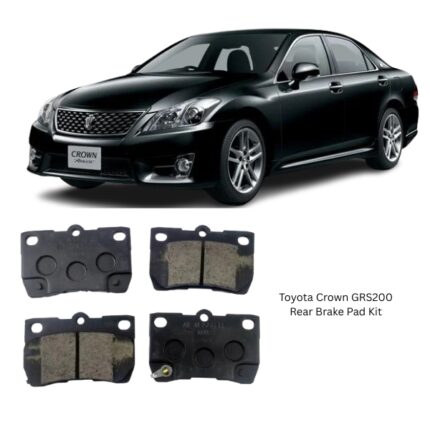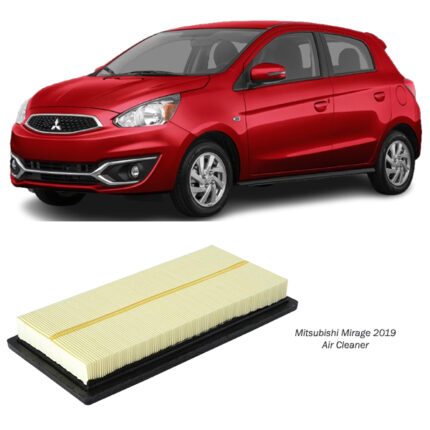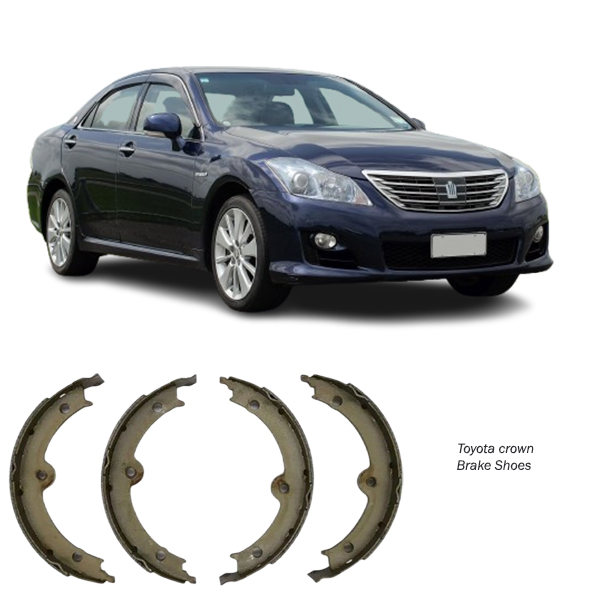-8%
Get Toyota Crown Brake Shoe Set 46530-30021 in Kenya
A brake shoe set is an integral component of a vehicle’s braking system, particularly in drum brakes. Understanding its role, functionality, and maintenance is essential for ensuring optimal braking performance and road safety. This detailed explanation covers the structure, function, benefits, and upkeep of brake shoe sets.
1. Understanding Brake Shoe Sets
What is a Brake Shoe?
Brake shoes are curved, friction-lined metal components housed inside a brake drum. When the brake pedal is pressed, the brake shoes press against the inside of the drum, creating friction that slows or stops the vehicle. A complete brake shoe set typically includes two shoes per wheel (primary and secondary), springs, and other hardware for proper assembly.
Materials Used
- Backing Plate: Steel or aluminum, providing strength and rigidity.
- Friction Lining: Made from materials like ceramic, organic, or semi-metallic composites, chosen for their durability and heat resistance.
Design and Placement
Brake shoes are positioned inside the brake drum and work with hydraulic wheel cylinders. Their design allows them to pivot outward when activated by the braking system.
2. How Brake Shoes Work
Mechanics of Operation
When you press the brake pedal:
- Hydraulic pressure from the master cylinder pushes brake fluid into the wheel cylinders.
- The wheel cylinders activate pistons that force the brake shoes outward.
- The friction lining on the brake shoes presses against the rotating drum, creating the friction needed to decelerate or stop the vehicle.
Self-Energizing Effect
The design of brake shoes includes a self-energizing mechanism where the rotation of the drum amplifies the braking force. This characteristic makes drum brakes efficient despite requiring less hydraulic pressure than disc brakes.
3. Types of Brake Shoe Sets
Brake shoes come in various configurations depending on the vehicle type and application:
- Leading-Trailing Shoe Arrangement: Found in most passenger vehicles, this system includes one leading shoe and one trailing shoe per wheel for balanced braking.
- Twin-Leading Shoe Arrangement: Common in larger vehicles, it provides superior stopping power by having both shoes act as leading during forward braking.
- Parking/Emergency Brake Shoes: A smaller brake shoe set that operates independently of the primary braking system, used for parking brakes.
4. Benefits of Brake Shoe Sets
1. Cost-Effectiveness
Drum brakes with brake shoes are generally less expensive to manufacture and maintain compared to disc brakes. Their components are robust, making them suitable for long-term use in less demanding conditions.
2. Durability
Brake shoes are highly durable and can withstand substantial wear and tear. They are particularly effective in vehicles that require rear-wheel braking and parking brake applications.
3. Efficiency in Low-Speed Applications
Brake shoes excel in low-speed, high-load situations, making them ideal for trucks, vans, and commercial vehicles.
4. Integrated Parking Brake Mechanism
Most drum brake systems include a built-in parking brake function, simplifying the vehicle’s overall braking architecture.
5. Minimal Exposure to Contaminants
Since brake shoes are enclosed within the drum, they are less exposed to external debris, water, and contaminants that can affect braking performance.
5. Signs of Wear and Replacement Needs
Brake shoes wear out over time, and recognizing the signs of deterioration is crucial for safety:
- Reduced Braking Efficiency: Longer stopping distances or reduced braking response.
- Unusual Noises: Squealing, grinding, or clicking noises from the rear wheels.
- Vibrations: Pulsation or vibration when braking.
- Uneven Wear: Visible inspection showing one shoe wearing out faster than the other.
- Burning Smell: A strong odor during or after braking can indicate overheated shoes.
6. Maintenance and Care Tips
1. Regular Inspection
Inspect the brake shoe set every 12,000-15,000 miles or as recommended by the vehicle manufacturer. Check for wear on the friction lining and ensure the springs and hardware are intact.
2. Adjustments
Many drum brake systems require periodic adjustment to maintain the correct distance between the shoes and the drum. Modern vehicles with self-adjusting brakes may reduce this need but still benefit from routine checks.
3. Cleaning
Brake dust accumulates inside the drum over time. Cleaning the drum and shoes during routine maintenance prevents dust buildup and ensures optimal performance.
4. Replacement
Replace brake shoes when the friction lining reaches the minimum thickness (often 1-2 mm). Replacing shoes in pairs ensures balanced braking.
5. Use Quality Components
Always opt for high-quality brake shoes and hardware kits. Inferior parts may wear out quickly or fail under stress, compromising safety.
6. Avoid Overloading
Overloading the vehicle places additional strain on the braking system, accelerating wear on brake shoes. Stick to the vehicle’s specified weight limits.
7. Comparing Drum Brakes and Disc Brakes
Brake shoes are primarily used in drum brake systems. While drum brakes are cost-effective and durable, disc brakes offer superior heat dissipation and performance under high-speed or high-temperature conditions. However, drum brakes are still widely used for rear wheels and parking brakes due to their advantages in specific scenarios.
| Feature | Drum Brakes (Brake Shoes) | Disc Brakes |
|---|---|---|
| Cost | Lower | Higher |
| Durability | Higher in low-stress conditions | Moderate |
| Performance | Effective at low speeds | Superior at high speeds |
| Heat Dissipation | Limited | Excellent |
| Maintenance | Periodic adjustment needed | Less frequent |
8. Benefits for Specific Vehicle Types
Passenger Cars
- Rear drum brakes with brake shoes are lightweight and compact, improving fuel efficiency and design flexibility.
Heavy-Duty Vehicles
- Trucks and buses benefit from the high load-bearing capacity of drum brakes, with brake shoes providing reliable performance.
Motorcycles and Scooters
- Smaller drum brakes with brake shoes are used for their simplicity and cost-effectiveness.
9. Environmental Impact
The materials used in brake shoe linings are increasingly environmentally friendly, with manufacturers phasing out harmful substances like asbestos. Modern linings utilize sustainable composites, reducing the ecological footprint of brake shoe production and disposal.
10. Conclusion
The brake shoe set remains an essential component of vehicle braking systems, particularly in drum brakes. Its robust design, cost-effectiveness, and efficiency in specific applications make it indispensable for many vehicles. Proper maintenance, timely replacement, and the use of quality components ensure long-lasting performance and safety.
Understanding the brake shoe set’s function and importance not only enhances vehicle longevity but also contributes to safer road conditions. Whether for personal cars, commercial vehicles, or motorcycles, brake shoes play a critical role in everyday transportation.
Follow us on Facebook for more parts.




